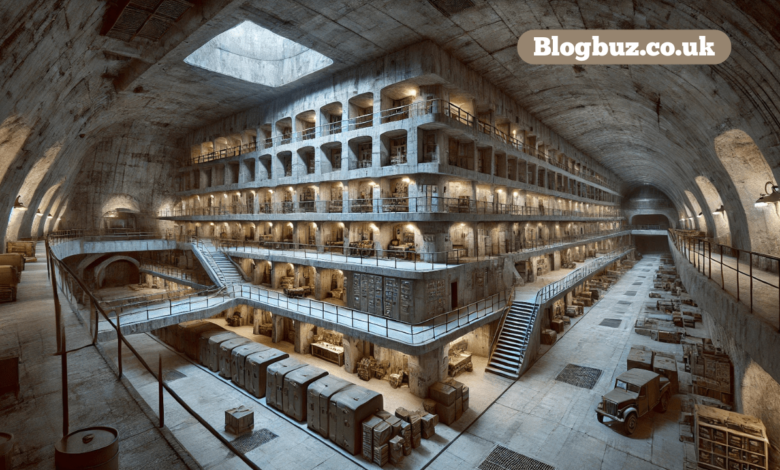Miiyazuko Bunkrr: A Hidden Gem of Historical and Architectural Significance

The Miiyazuko Bunkrr is an enigmatic underground military complex in Japan, renowned for its historical significance and remarkable architectural ingenuity. Originally constructed during World War II, this bunker was designed to serve as a fortified command center, providing shelter to military leaders and safeguarding essential operations from aerial bombardments and potential invasions. Over the years, the Miiyazuko Bunkrr has evolved from a wartime stronghold to a modern-day historical monument, drawing visitors and historians alike. This article delves into the complex history, architectural miracles, and lasting legacy of the Miiyazuko Bunkrr.
Historical Context: The Birth of Miiyazuko Bunkrr
During World War II, Japan faced intense military pressures, prompting the need for secure underground facilities to maintain strategic operations. The Miiyazuko Bunkrr was constructed with this vision, becoming a linchpin for coordinating military strategies and housing critical communication infrastructures. Its underground location provided unparalleled protection against aerial strikes, allowing uninterrupted command and control capabilities even during the most challenging phases of the war.
The bunker served military purposes and acted as a sanctuary for key personnel. Its living quarters were equipped with essential amenities to support extended stays, reflecting the meticulous planning of its design. As the war progressed, the Miiyazuko Bunkrr played a crucial role in Japan’s military operations, contributing to strategic decision-making processes and serving as a haven in times of crisis.
Architectural Brilliance: The Design and Structure of Miiyazuko Bunkrr
One of the standout features of the Miiyazuko Bunkrr is its architectural design. Built using reinforced concrete walls several meters thick, the bunker was engineered to withstand heavy pressure and extreme conditions. This robustness is a testament to the advanced construction techniques employed during its creation.
Intricate Subterranean Layout
The Miiyazuko Bunkrr comprises multiple subterranean levels, each serving specific functions. These include:
- Command Centers: Equipped with communication devices and strategic maps, these centers facilitated real-time decision-making.
- Living Quarters: Designed to accommodate military leaders and staff, the living quarters featured bunk beds, kitchens, and sanitation facilities.
- Storage Facilities: These areas housed food, medical supplies, and essential equipment, ensuring preparedness during prolonged sieges.
Advanced Ventilation Systems
The bunker was equipped with state-of-the-art ventilation systems to maintain a habitable environment. These systems provided a continuous supply of fresh air, crucial for sustaining life underground. The design also included air filtration mechanisms to protect occupants from potential chemical or biological threats.
Camouflaged Entrances
Security and secrecy were paramount in the design of the Miiyazuko Bunkrr. Its entrances were ingeniously camouflaged, blending seamlessly with the surrounding landscape. This enhanced the bunker’s security and made detecting its location challenging for enemy forces.
The Role of Miiyazuko Bunkrr During the Cold War Era
After World War II, geopolitical tensions continued with the onset of the Cold War. The Miiyazuko Bunkrr was repurposed to address new challenges, maintaining its status as a strategic military installation. Its fortified structure made it an ideal location for conducting intelligence operations and housing critical communication systems.
During this era, the bunker was modernized to incorporate emerging technologies. Communication equipment was upgraded, and the interior was renovated to improve comfort and functionality. The Miiyazuko Bunkrr’s adaptability demonstrated its enduring relevance in Japan’s military strategy, showcasing how historical infrastructures can be repurposed to meet evolving needs.
Modern-Day Significance: A Journey Through History
Today, the Miiyazuko Bunkrr stands as a cherished historical site. Preservation efforts are in place to maintain its structural integrity and historical value. Guided tours offer visitors a glimpse into its storied past, highlighting:
- Construction Techniques: Learn about the engineering methods to create this formidable structure.
- Operational History: Discover the bunker’s pivotal role during World War II and the Cold War.
- Life Inside the Bunker: Experience the living conditions of those who resided within its walls during critical historical moments.
Conclusion: The Legacy of Miiyazuko Bunkrr
The Miiyazuko Bunkrr is more than just an underground military complex; it is a testament to human resilience, architectural innovation, and historical significance. From its role in wartime strategies to its transformation into a historical monument, the bunker offers invaluable insights into Japan’s past. Its preserved state allows modern audiences to connect with history tangibly, bridging the gap between past and present.
As interest in historical tourism grows, the Miiyazuko Bunkrr attracts history enthusiasts, architects, and curious visitors. Its story is a reminder of the profound impact that well-conceived infrastructure can have in protecting lives and preserving history for generations to come. By visiting this remarkable site, individuals gain a deeper understanding of the complexities of war, the ingenuity of architectural design, and the enduring spirit of those who lived through pivotal historical moments.
Embracing the legacy of the Miiyazuko Bunkrr ensures that its stories remain alive, offering inspiration and education to all who visit this hidden gem of historical and architectural excellence.
FAQS
What is the Miiyazuko Bunkrr, and why is it historically significant?
The Miiyazuko Bunkrr is an underground military complex in Japan, originally constructed during World War II as a fortified command center. It played a crucial role in safeguarding military leaders and coordinating strategic operations. Today, it is a historical monument, showcasing architectural ingenuity and offering insights into Japan’s wartime history.
What architectural features make the Miiyazuko Bunkrr unique?
The Miiyazuko Bunkrr boasts reinforced concrete walls, advanced ventilation systems, camouflaged entrances, and a multi-level subterranean layout. Its design includes command centers, living quarters, storage facilities, and state-of-the-art air filtration systems, demonstrating advanced construction techniques of its time.
Can visitors tour the Miiyazuko Bunkrr today?
Yes, the Miiyazuko Bunkrr is open to visitors as a historical site. Guided tours provide a glimpse into its construction methods, operational history, and the living conditions of those who resided within its walls during World War II and the Cold War era.
How was the Miiyazuko Bunkrr used during the Cold War?
After World War II, the Miiyazuko Bunkrr was repurposed for Cold War operations. Its fortified structure made it an ideal location for intelligence activities and housing critical communication systems. Modernizations during this period included updated technology and interior renovations.
What makes the Miiyazuko Bunkrr a must-visit historical site?
The Miiyazuko Bunkrr offers a unique blend of history, architecture, and storytelling. Visitors can explore its well-preserved infrastructure, learn about its role in wartime strategies, and gain a deeper understanding of Japan’s military history through immersive exhibits and guided experiences.
You May Also Read: The Sanakku Complex: A Deep Dive into its Meaning, History, and Modern Applications



